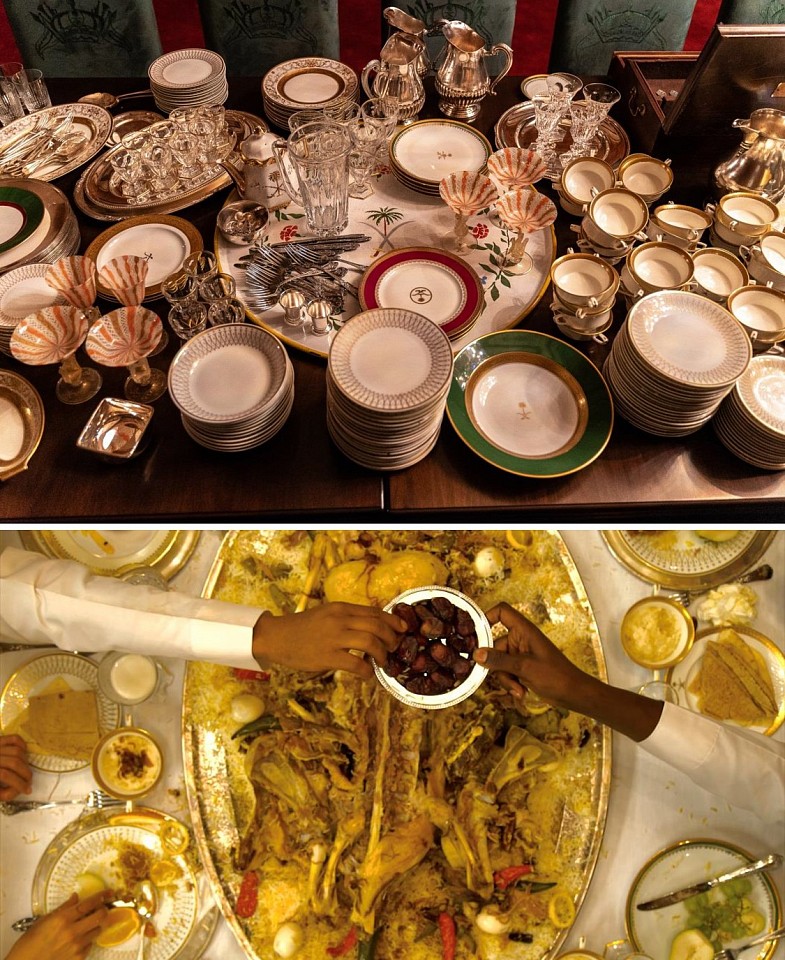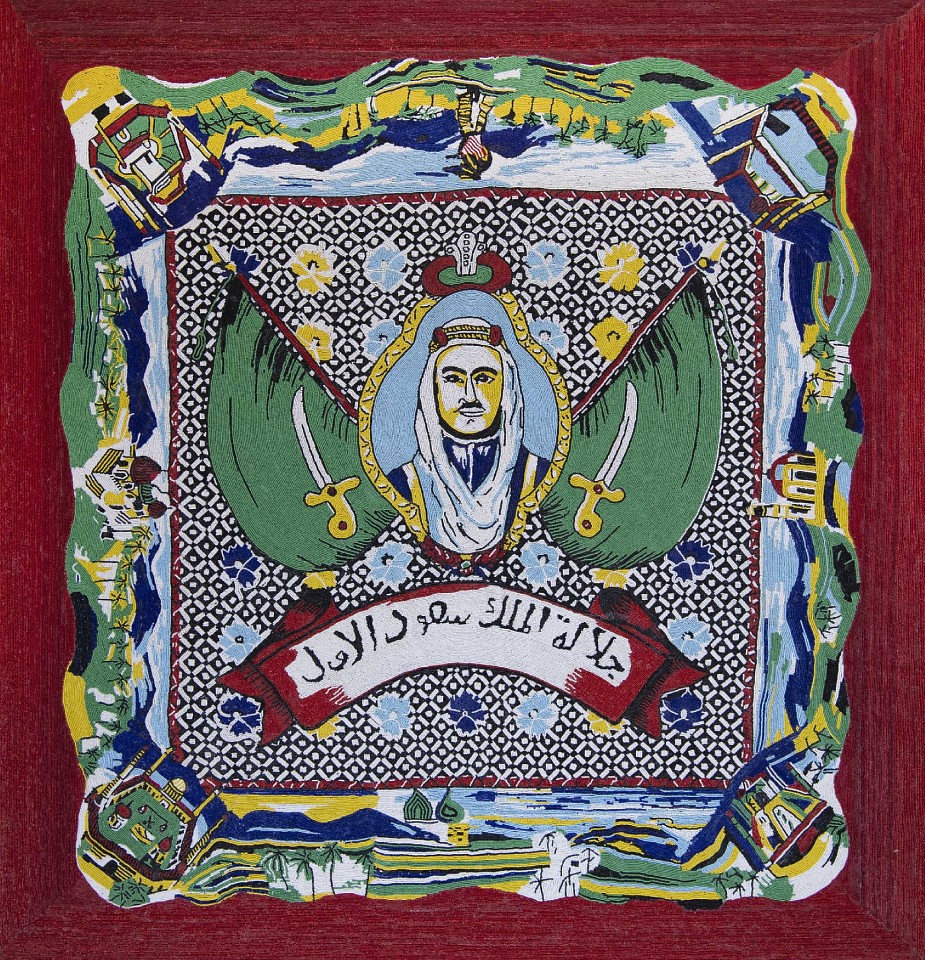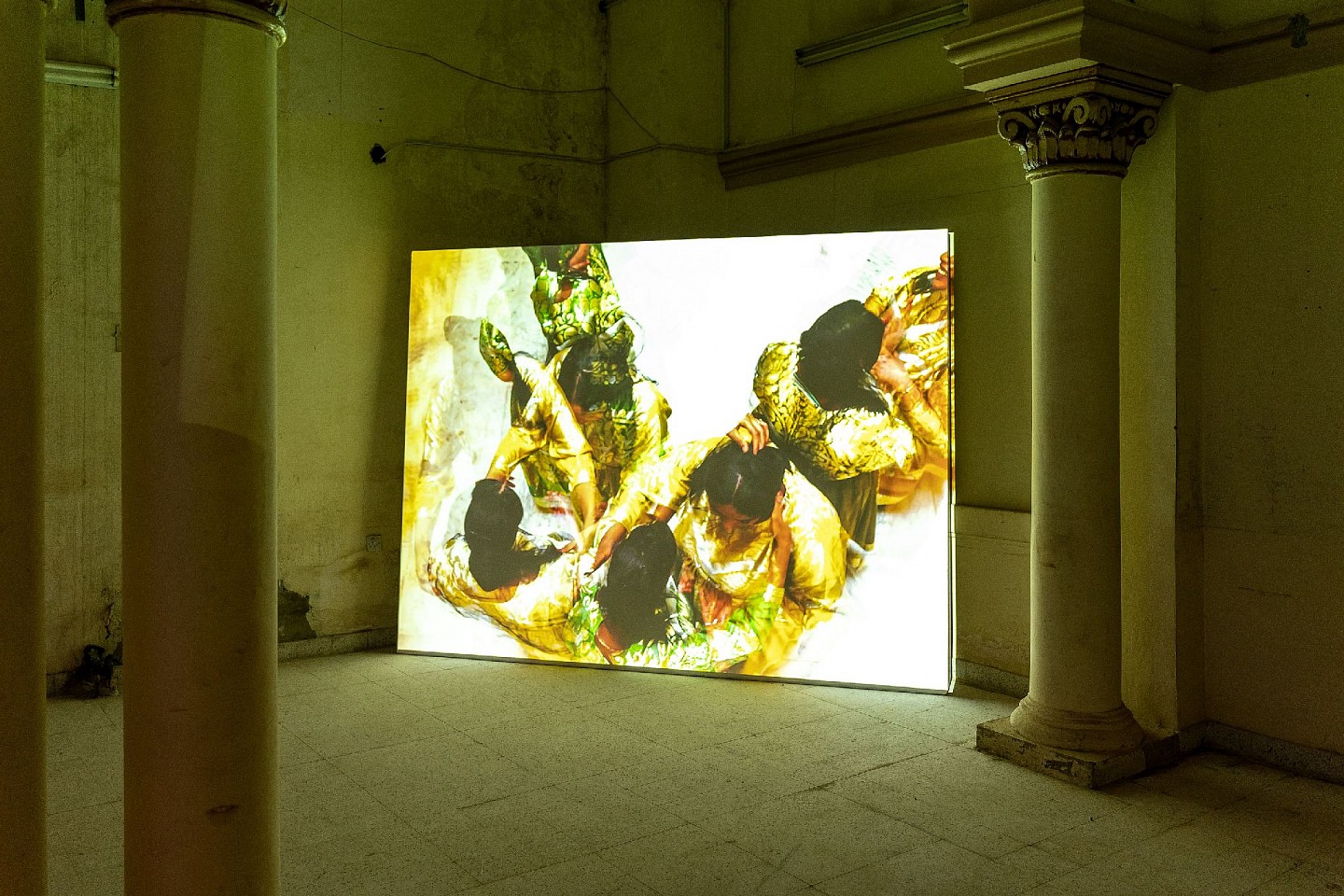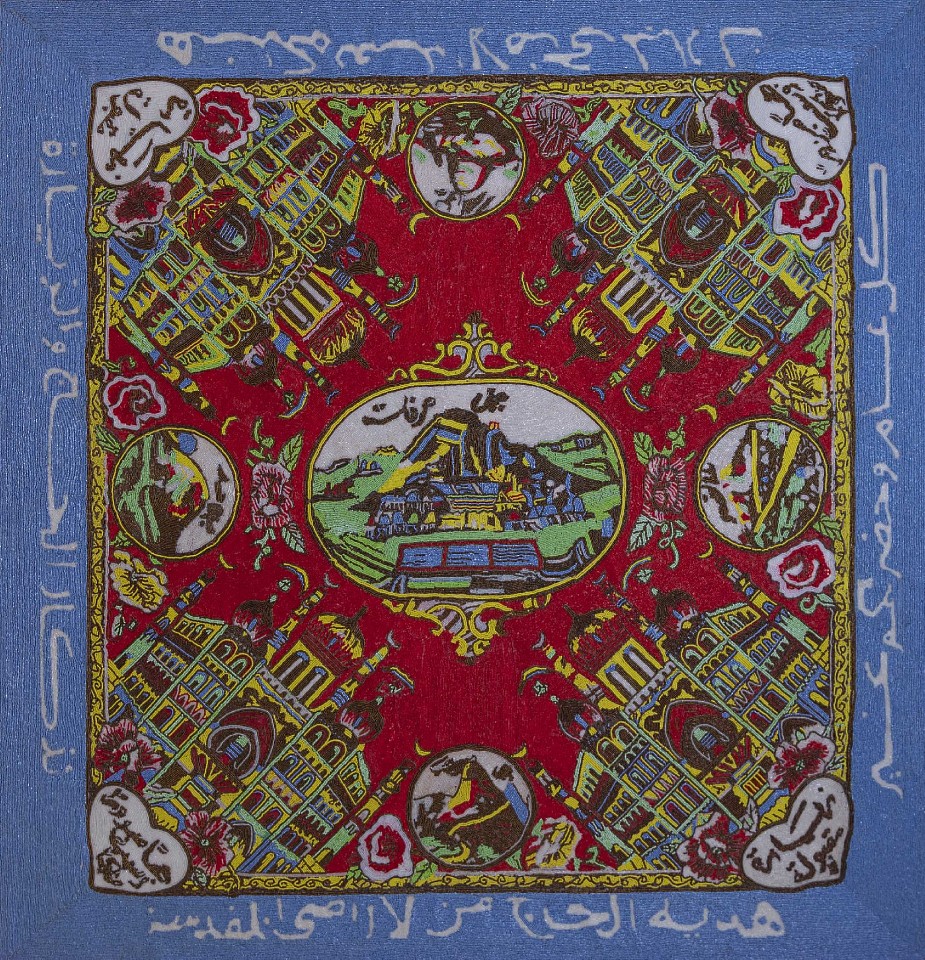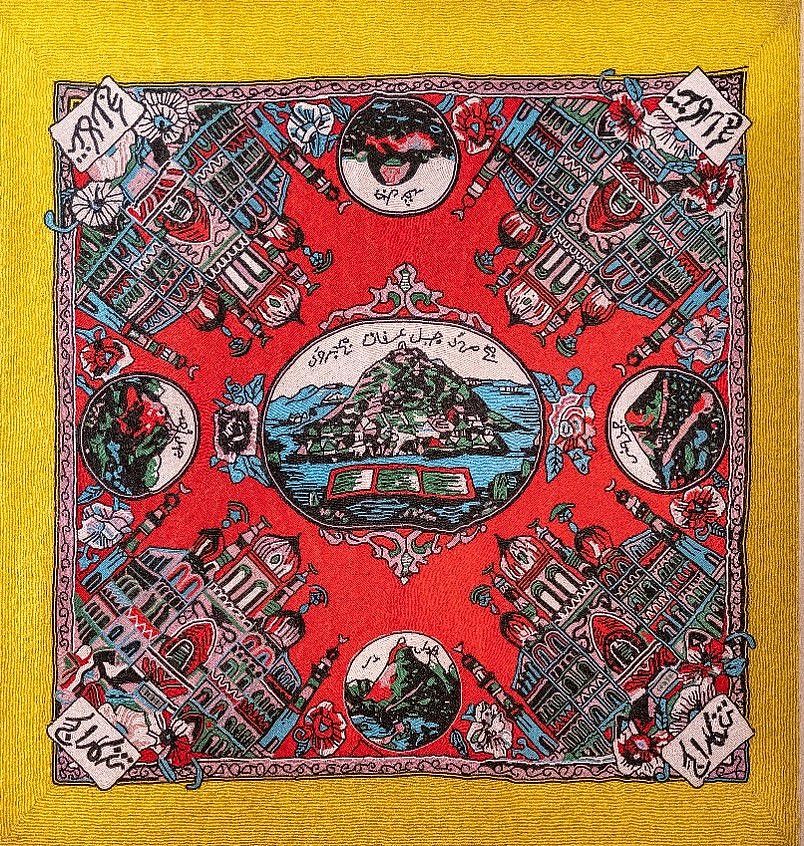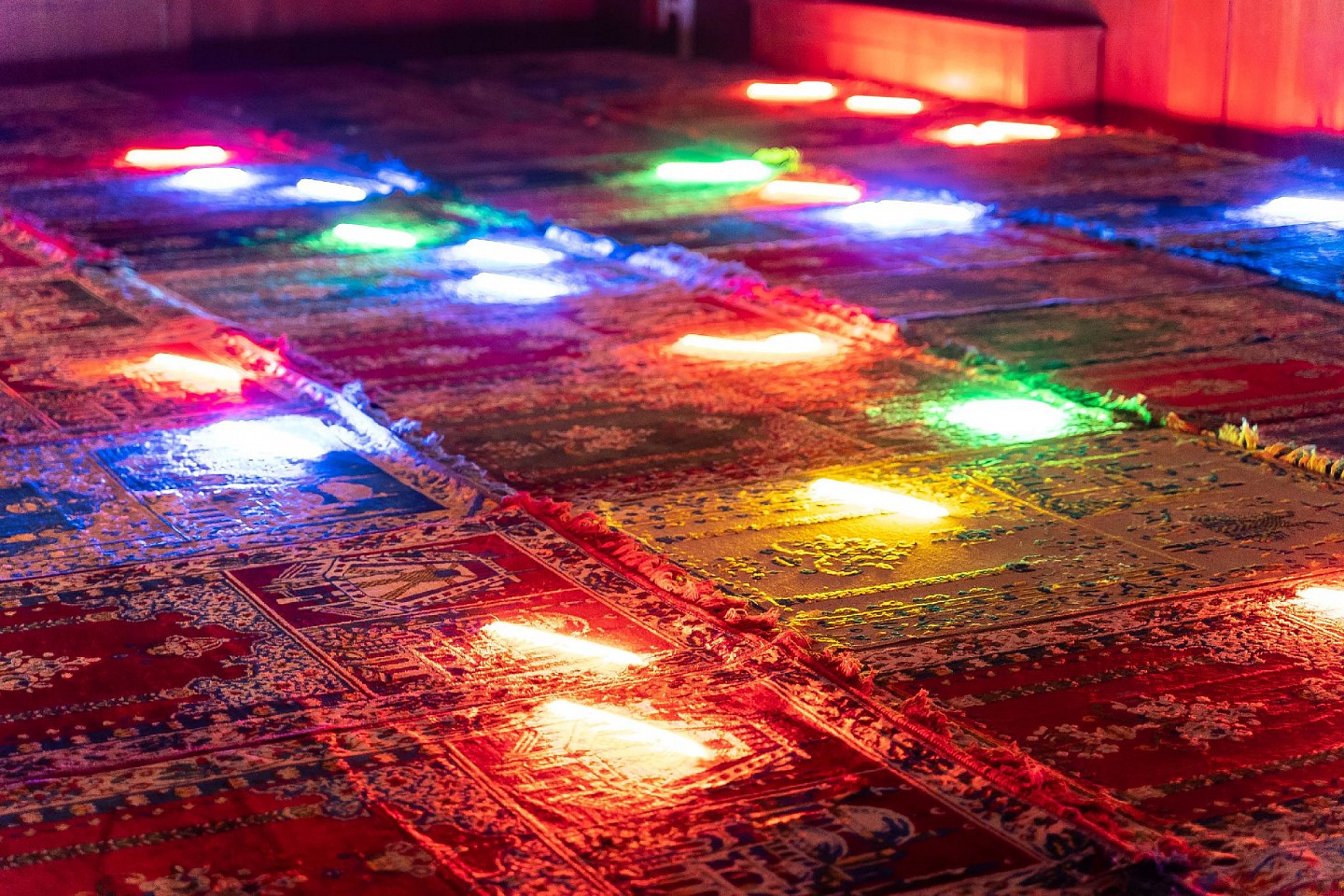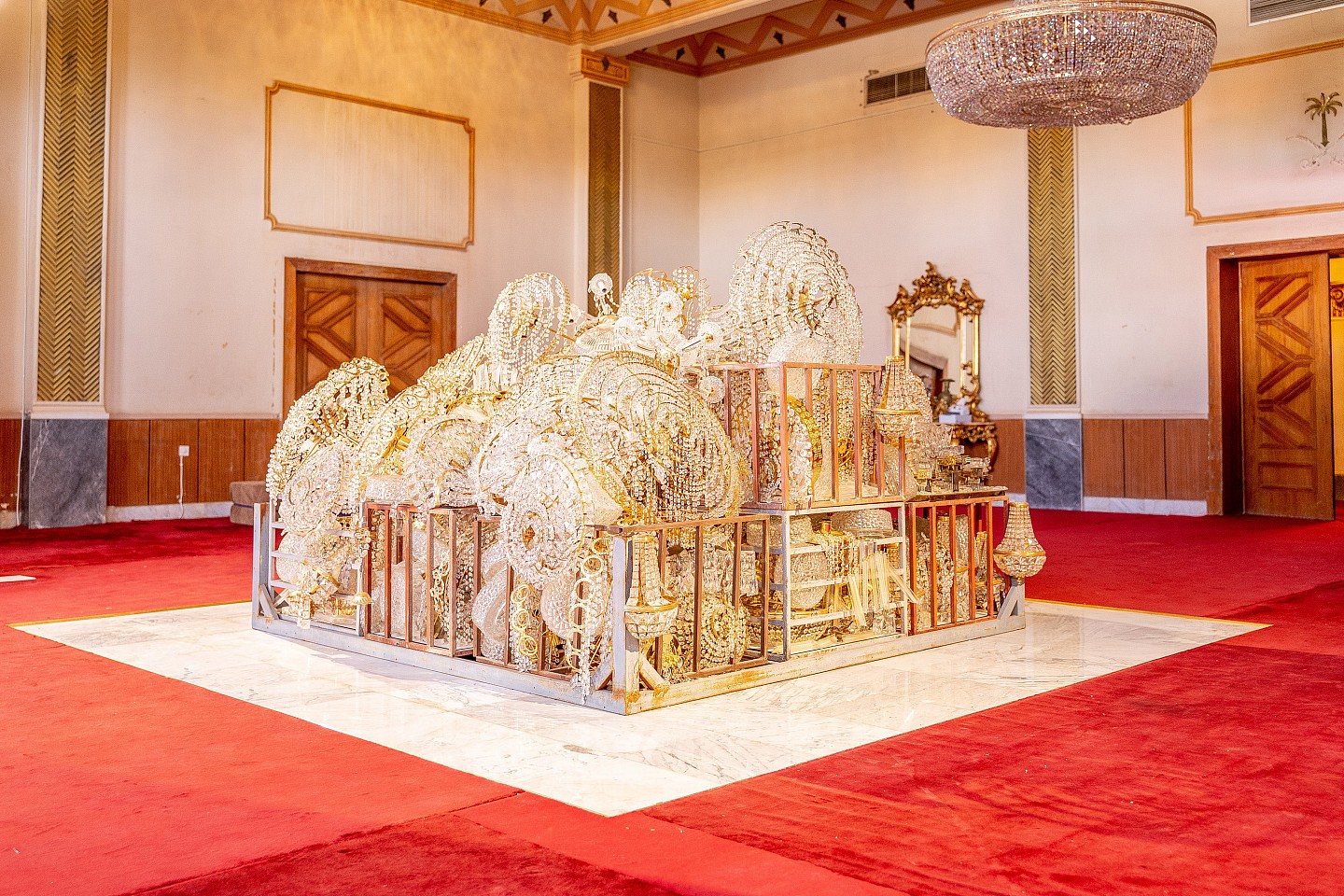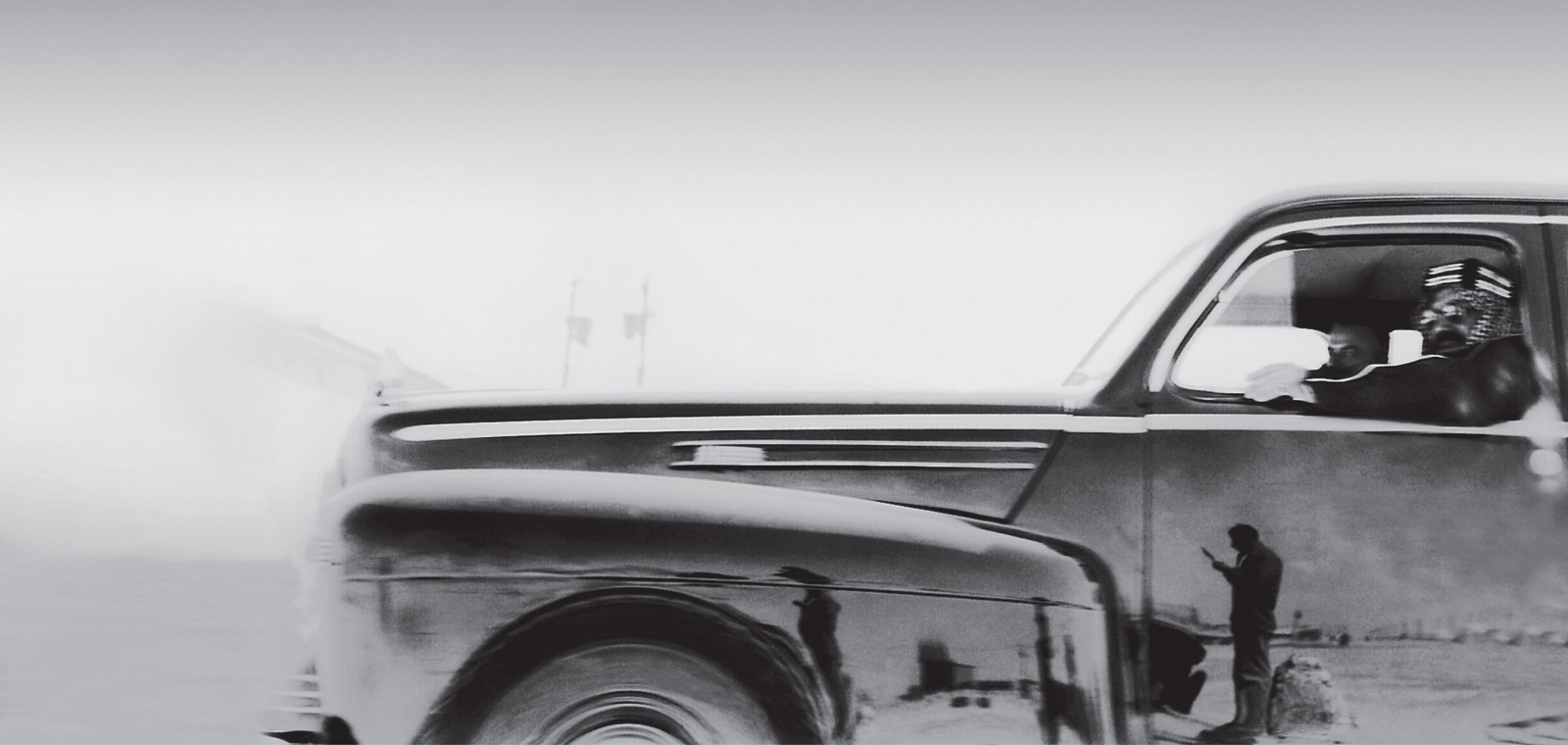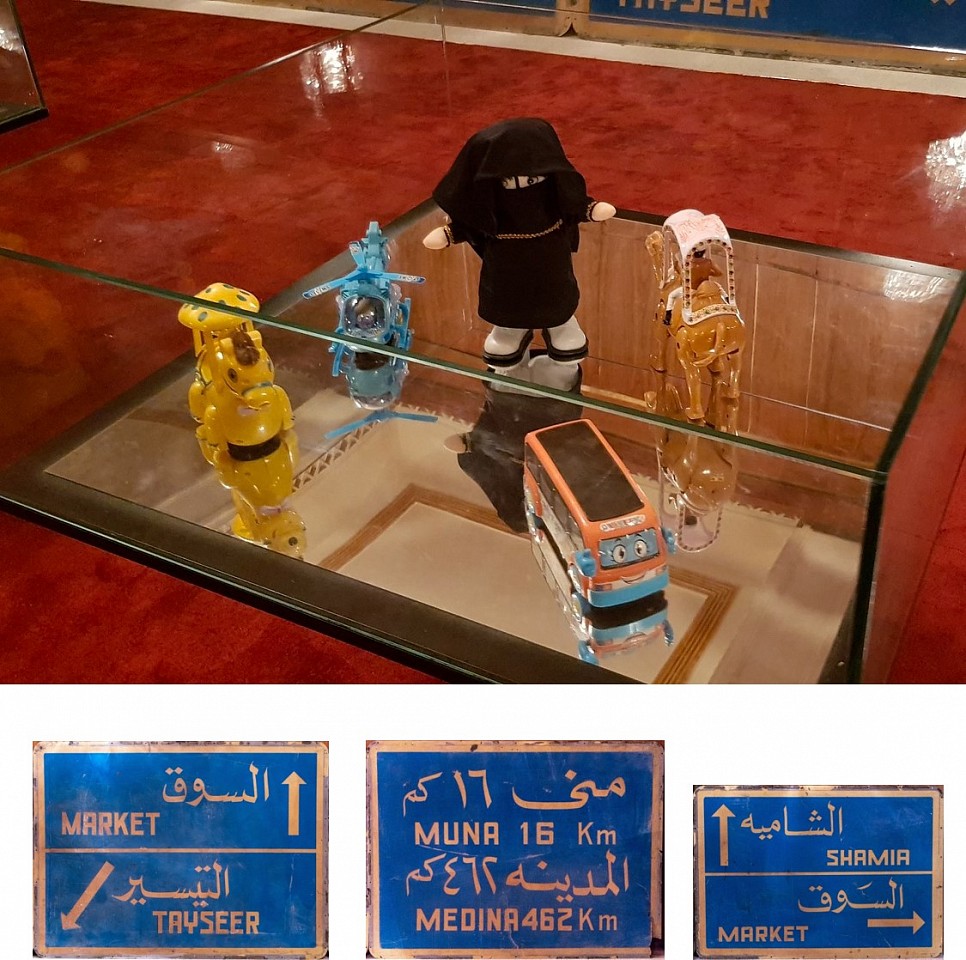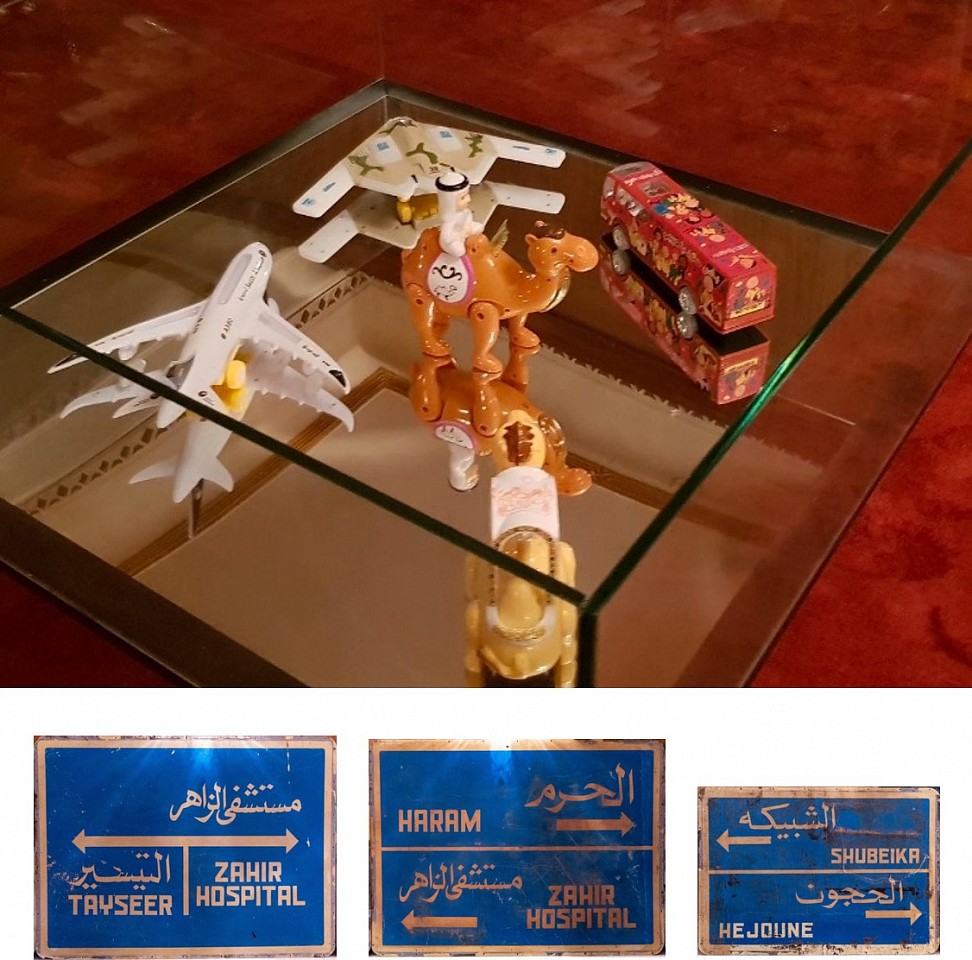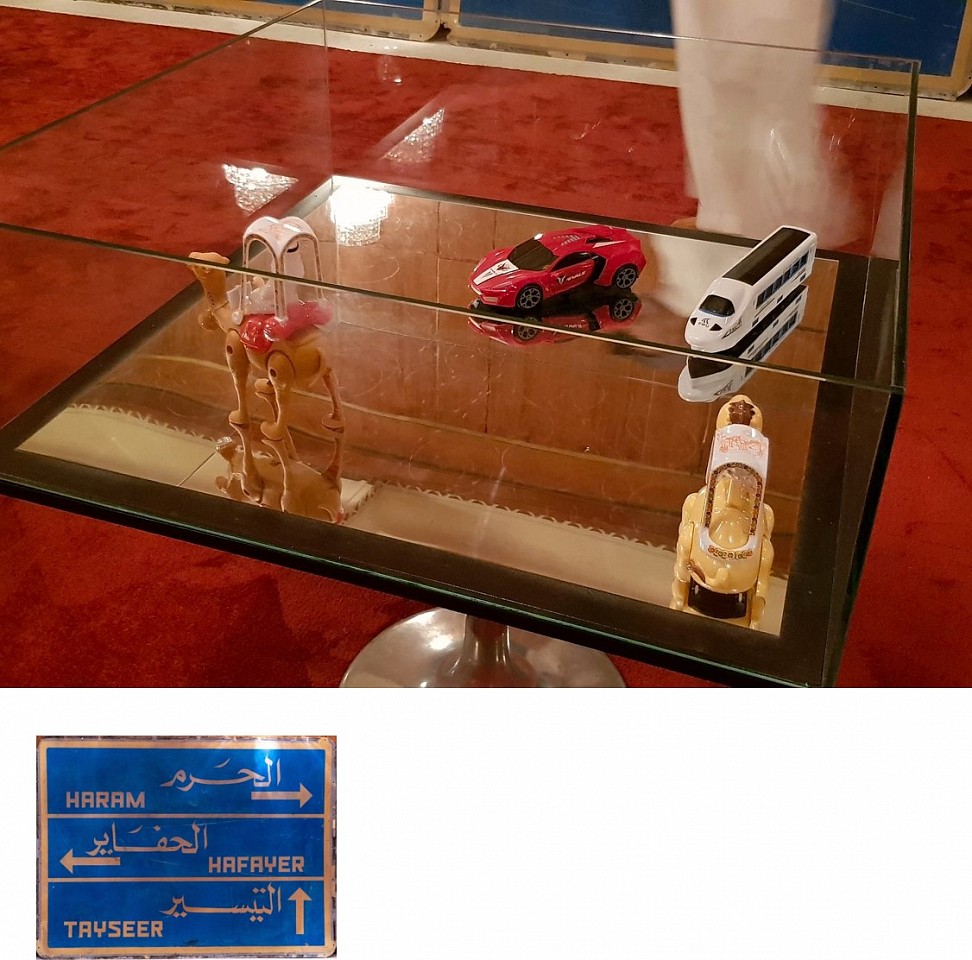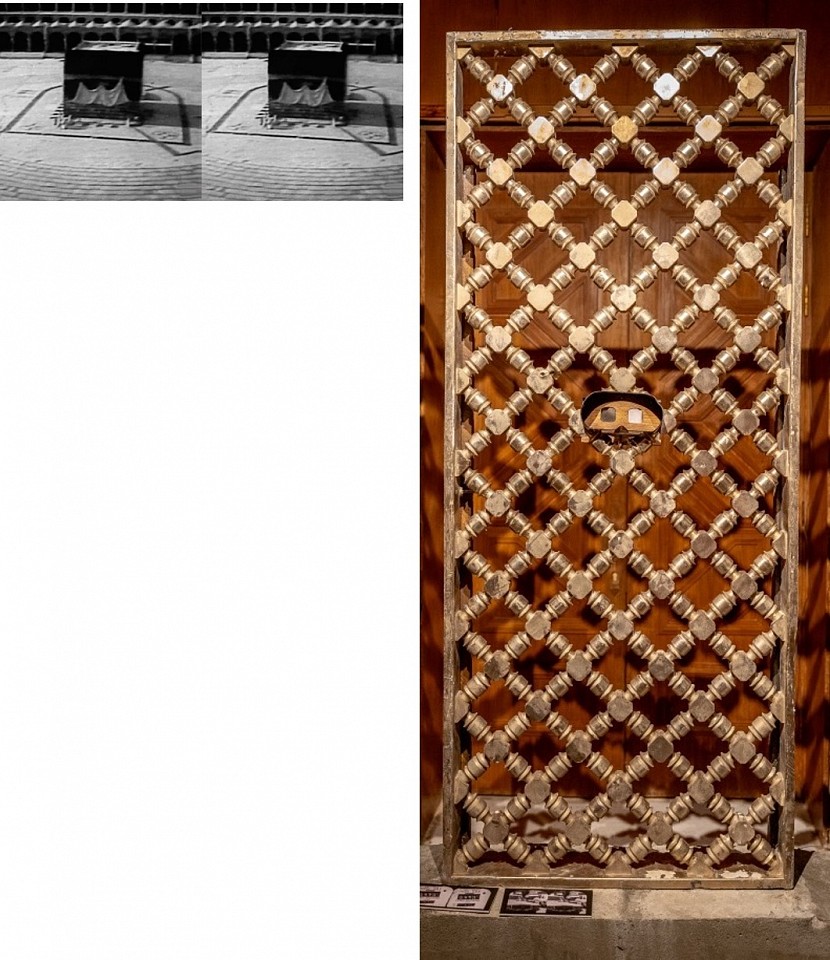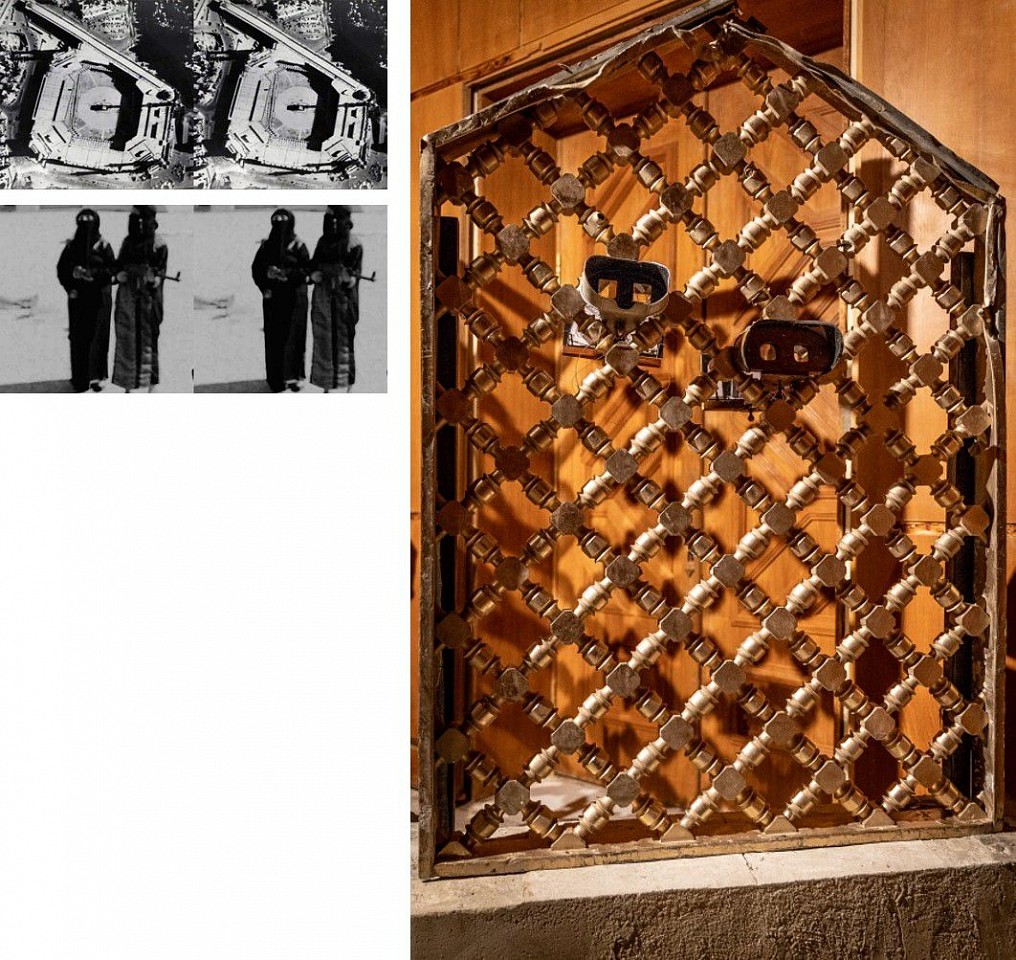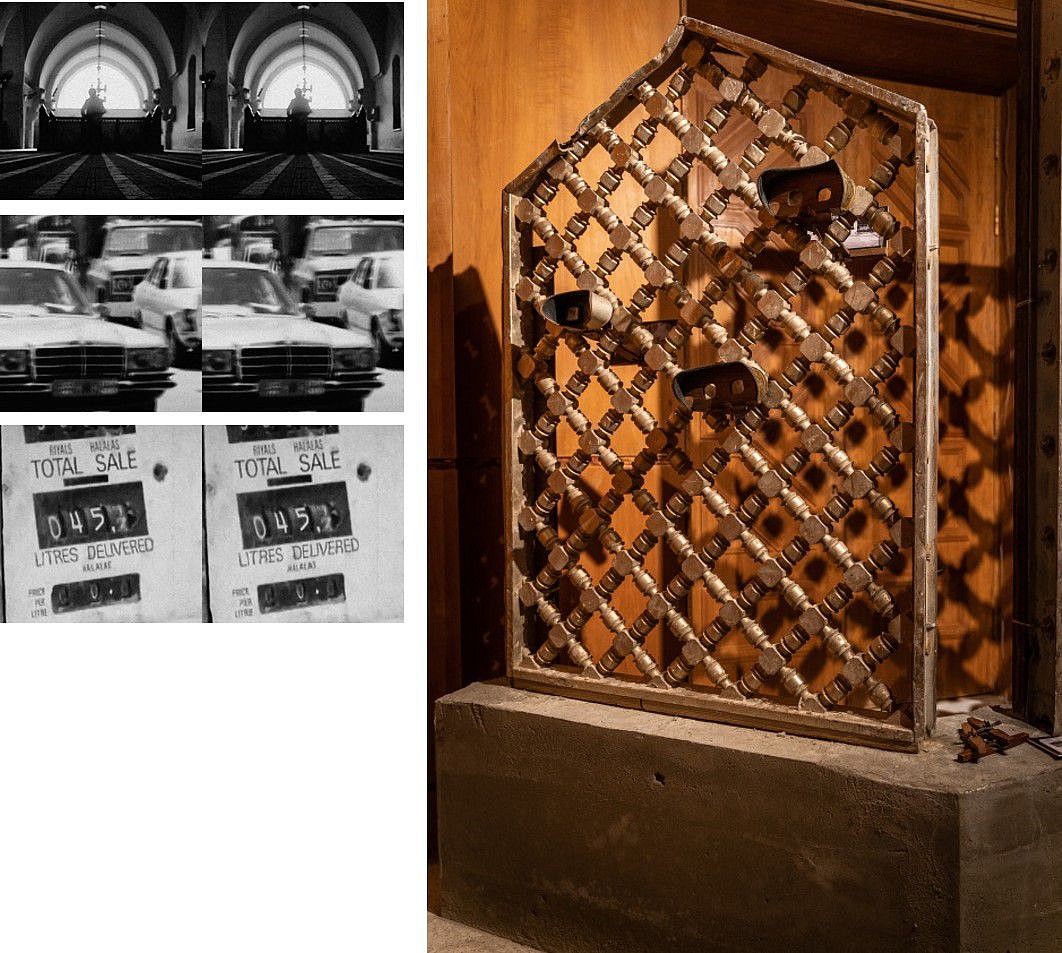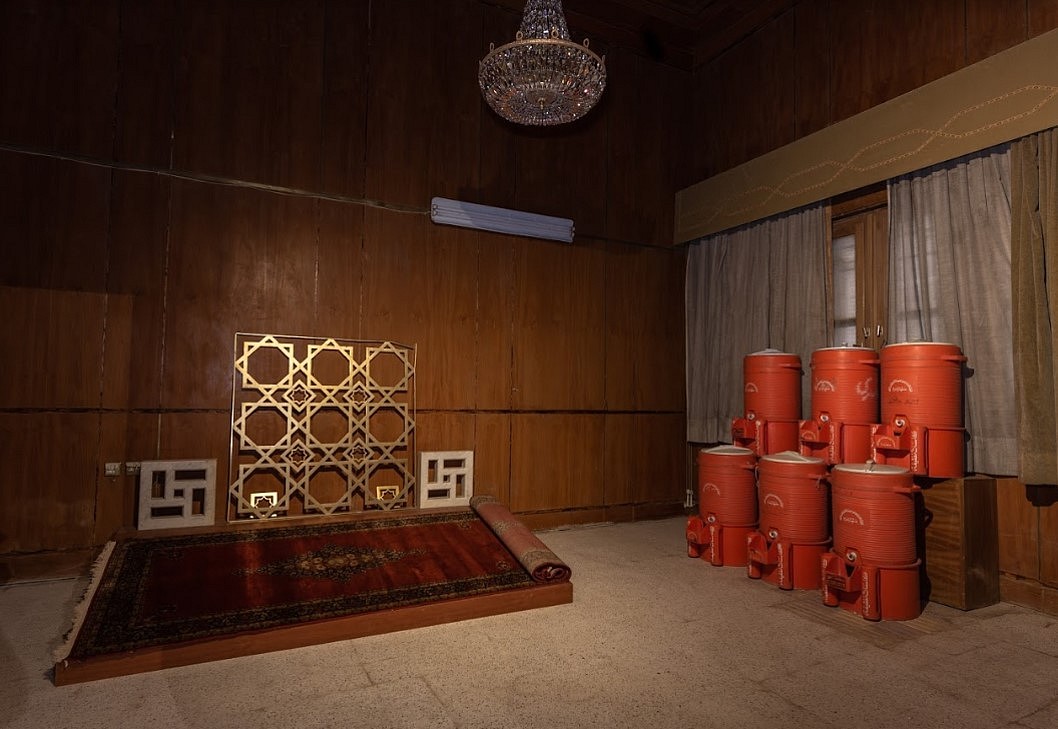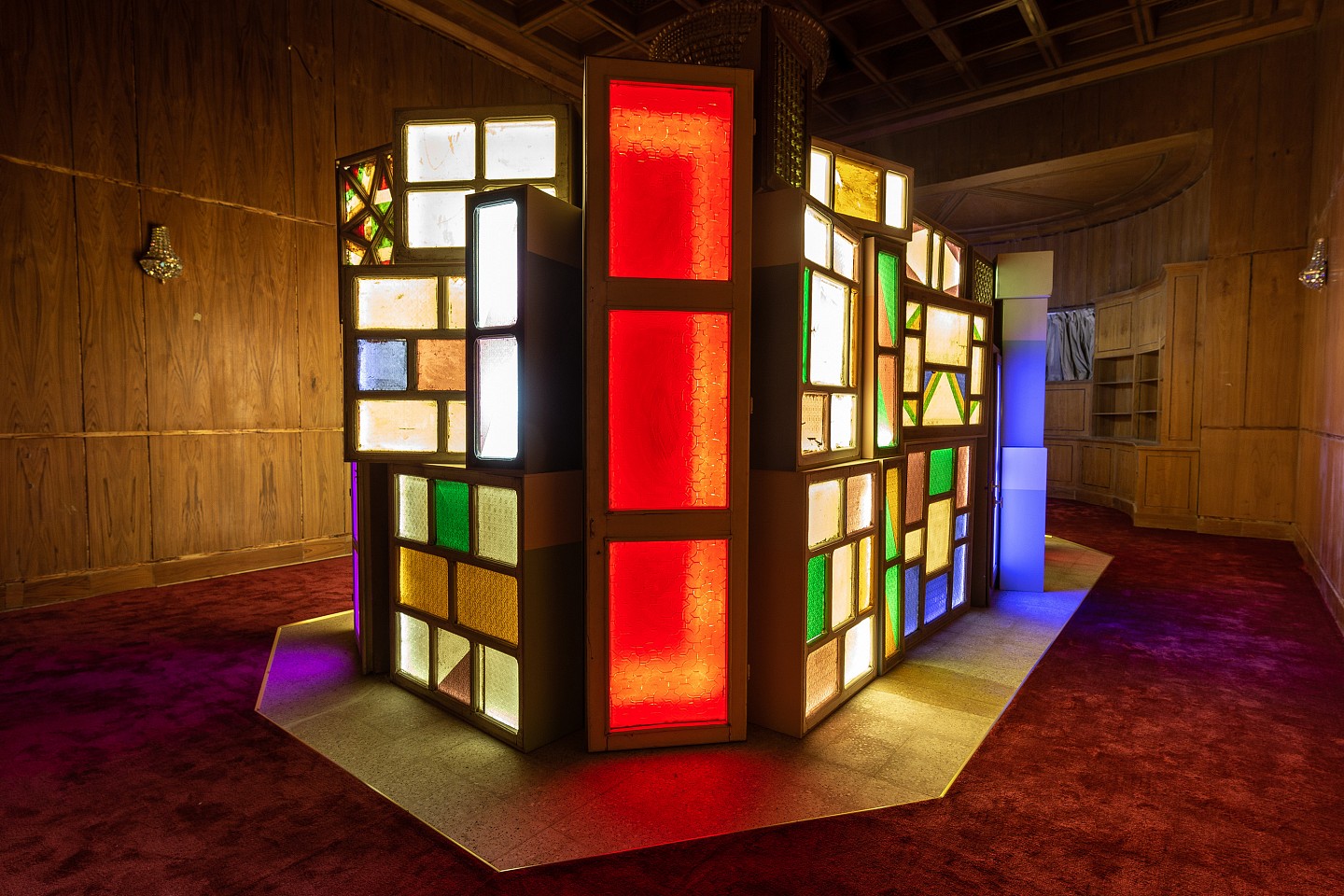Sultan Bin Fahad
Dinner at the Palace, 2019
Single channel video and installation of tables, chairs, ceramic plates, silverware, glass cups, silver ewers and plates
SBF0044
Sultan Bin Fahad
King Saud I from the Holy Economy series, 2019
Cloth and plastic beads
SBF0040
Sultan Bin Fahad
Labor I (Sufrah Wa Sayah), 2019
2-channel digital video installation
SBF0045
Sultan Bin Fahad
Manasik I from the Holy Economy series, 2019
Cloth and plastic beads
SBF0038
Sultan Bin Fahad
Manasik II from the Holy Economy series, 2019
Cloth and plastic beads
SBF0039
Sultan Bin Fahad
Prayer Room, 2019
Rugs and neon
SBF0046
Sultan Bin Fahad
To Dust, 2019
Crystal, brass, copper, steel, and mirror
SBF0017
Sultan Bin Fahad
1440m, 2018
Gelatin silver print
SBF0009
Sultan Bin Fahad
Loop I, 2018
Fiberglass, mirror, metal, plastic toys
SBF0019
Sultan Bin Fahad
Loop II, 2018
Fiberglass, mirror, metal, plastic toys
SBF0020
Sultan Bin Fahad
Loop III, 2018
Fiberglass, mirror, metal, plastic toys
SBF0021
Sultan Bin Fahad
1979 I, 2017-19
Brass rails, stereoscope and photos
SBF0032
Sultan Bin Fahad
1979 II, 2017-19
Brass rails, stereoscope and photos
SBF0033
Sultan Bin Fahad
1979 III, 2017-19
Brass rails, stereoscope and photos
SBF0034
Sultan Bin Fahad
Flood, 2017-19
Carpet, brass rails, plastic water containers and marble blocks
SBF0031
Sultan Bin Fahad
Window, 2017-19
Glass, wood and led lights
SBF0018



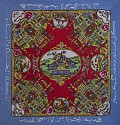
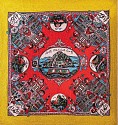




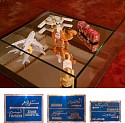

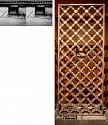

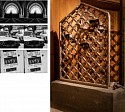


This solo exhibition presents the artwork of Sultan bin Fahad, which is a series of critical material investigations of the region. The show title takes the premise of its namesake the Red Palace in Riyadh, as a site of inspiration and allegory, at the height of the country’s modernization as well as the location of the inaugural edition of the show. In order to highlight the significance of this show, Khuzam Palace was chosen for its 2nd manifestation.
The Khuzam Palace, the site chosen of the Red Palace exhibition in recognition of its national value in the history of the Kingdom, was the seat of government in Jeddah. It was the first residence of King Abdul Aziz in Jeddah, and where the first oil agreement between the Kingdom and the United States of America was signed in 1933, the use of the Khuzam Palace also coincides with the exhibition at the Red Palace in Riyadh in celebration of this historic landmark.
The Red Palace was completed in 1944 for then Crown Prince Saud bin Abdulaziz (reign from 1953 – 1964) and became his royal residence for many years, where he greeted many heads of states, such as Jawaher Nehru, Jamal Abdul Nasser and Shukri Al Quwatli. After King Saud’s move to Al-Nasriya Palace, in 1953, It became the Saudi Council of Ministers office and subsequently the Board of Grievances until 1987.
Sultan’s recent practice takes on many forms, including videos, sculptures, photograms and installations. He has been invested in collecting memorabilia, historical relics and discarded objects from various sites across Saudi Arabia. The artist then creates sculptures and installations that look into the transformative critical latency of the ruin. In his art practice, he focuses on pivotal personal moments that are synonymous with the social metamorphosis of the country. The artist is invested in the act and concept of translatability, particularly of the intangible, such as evident in language, to reinterpret histories and narratives. He attempts to capture the intangible in material culture to demonstrate and embody its inherent social and collective potential. The Red Palace foregrounds Sultan’s current research and uses it as a common denominator of the various works that are exhibited. The exhibition is divided into seven chapters; The Red Palace,1979, Labor, Gulf War, Holy Economy, Dinner at the Palace, and Prayer Room. The works in these chapters are framed within the historical and political events that took place during the palace’s operation. The artist has created a series of video installations that look at the recreation of a palace dinner taking place in the various abandoned rooms of the palace mainly highlighting the role of labor. Additionally, on view are an extended body of works from the “Holy Economy”.

